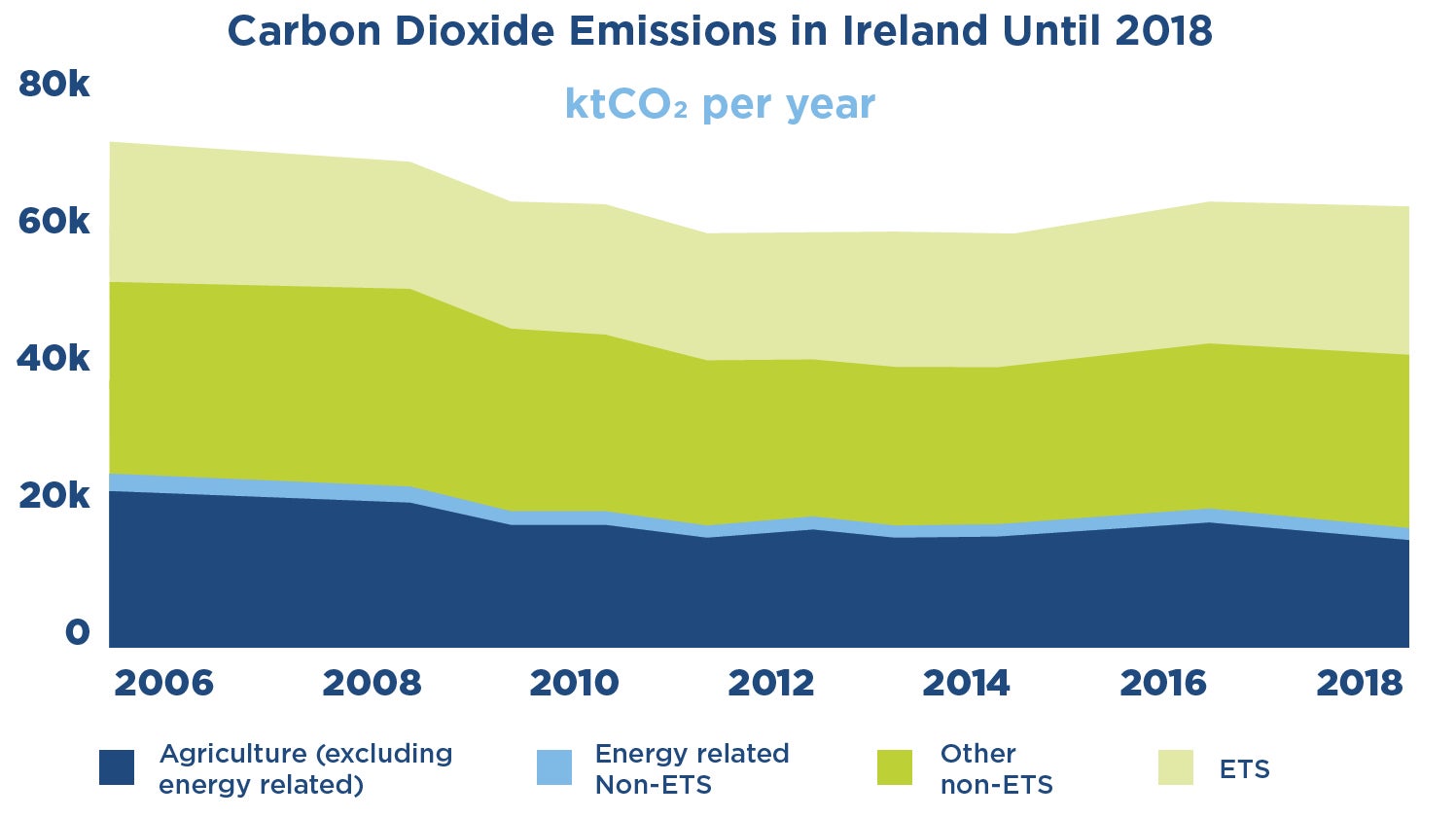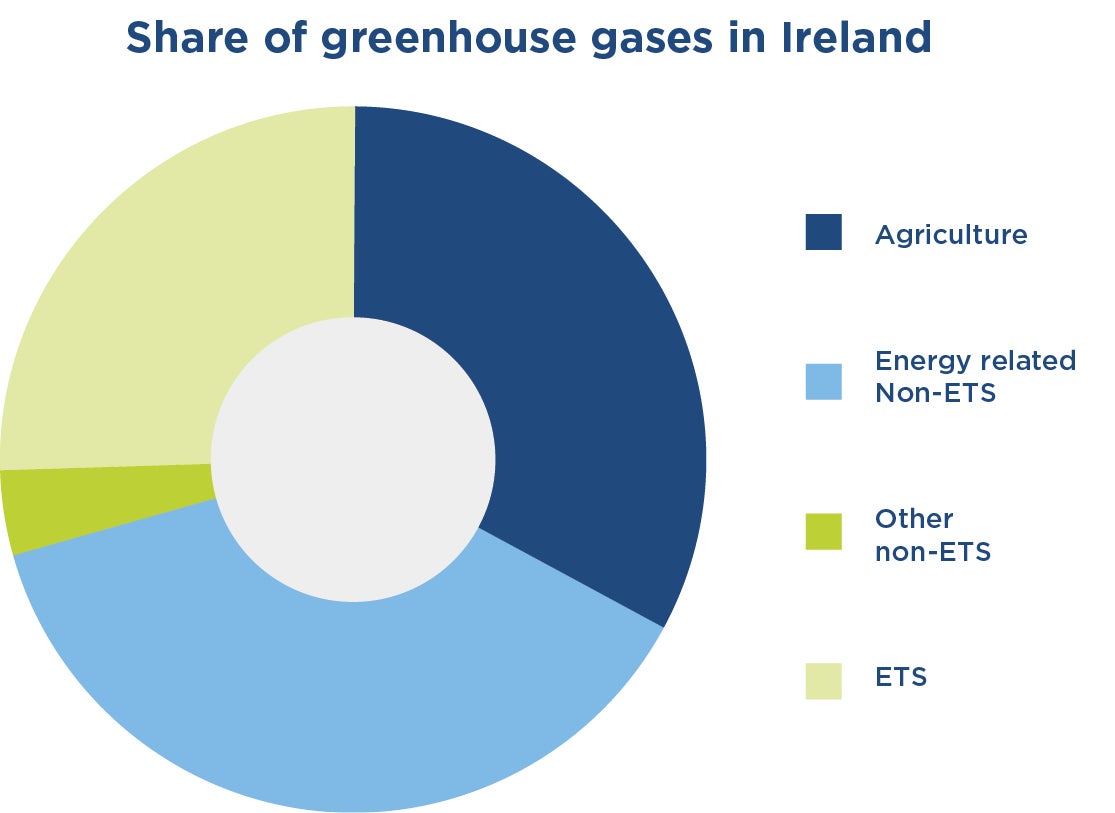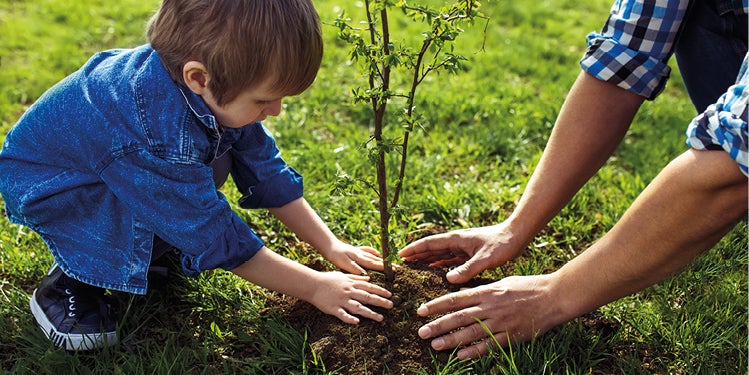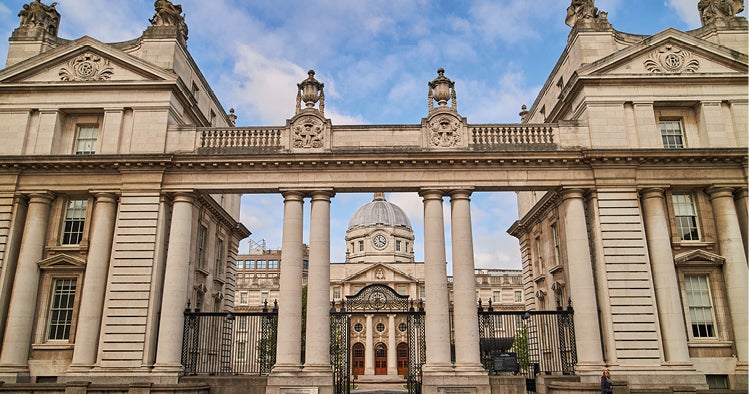What climate change means for Ireland
The Earth’s population is finally waking up to some of the grave effects of climate change that have been festering since the industrial revolution. Climate change has been mainly caused by human activities, such as our fossil-fuel dominant domestic and industrial energy usage.
The consumption of such fossil fuels are known to produce greenhouse gases, which according to the previous reports from the Environmental Protection Agency are the primary cause of climate change across the globe.
Climate change has led to droughts, intense storms, heat waves, melting of glaciers, warming oceans, rising sea levels, and directly harming animals and their respective habits, endangering all life on Earth. Climate change should, therefore, be combated to stop its devastating effects on our environment.
Put simply, we need action, and we need it now.
This guide helps you understand some of the complex challenges posed by climate change, its causes, and its impacts on our environment. We cover Ireland's contributions to climate change, what is being done to combat climate change and the role you can play to fight climate change.
As one of Ireland’s leading energy and services suppliers, we’re here to help you make better energy choices to improve your carbon footprint and contribute to a lower carbon future.
What is climate change?
Climate change is the effect of long term trends and shifts that our climate has taken over many decades as a result of human activities. The impacts of climate changes have been rising since the 1900s due to increased levels of destructive environmental activities, with further acceleration caused by mid-century industrial developments right through the present day climate crisis levels.
Climate change leads to global warming, which has the potential to destroy all life on earth if left unchecked. The production of greenhouse gases by the utilisation of fossil fuels has been one of the main causes of climate change.
Naturally, climate usually goes through patterns and changes, but the changes are now dangerously occurring more rapidly than ever due to a high concentration of greenhouse gases in the atmosphere. Besides increased global warming in Ireland, rain patterns have also changed in different regions within the country as part of climate changes that are taking place.
Climate change has not just been as a result of energy production from unsustainable energy sources, but there have been other causes of climate change, such as deforestation and land clearance, transport emissions, emissions from mining activities, burning of plastics, the use of agricultural fertilisers, and several other activities.
Mining and transport emissions are, of course, tied to energy production from non-renewable sources such as coal, oil and gas. Our nation’s trees, peat bogs and other rich vegetation covers usually absorb carbon dioxide produced from our energy production activities; however, with decreased vegetation cover meaning less sequestered carbon, carbon dioxide levels have increased in the Earth's ozone layer and atmosphere.
What are greenhouse gases?
Carbon dioxide usually springs to most folks’ minds when they hear the term “greenhouse gases”. However, it is not the only greenhouse gas within our atmosphere. There are different types of greenhouse gases, with different properties, concentration within the atmosphere, and different levels of environmental impact.
There are different types of greenhouse gases; water vapour, carbon dioxide, methane (CH4), nitrous oxide (N2O), chlorofluorocarbons and hydrofluorocarbons (CFC & HFCs).
The greenhouse gas with the greatest impact on climate is water vapour, but it only remains in the atmosphere for a few days. On the other hand, carbon dioxide emissions can remain in the atmosphere for decades or even centuries, making them far more threatening.
Worse yet, methane causes much more warming than carbon dioxide, and it stays in the atmosphere for just about 12 years and nitrous oxide persists within the atmosphere for about 100 years.
Carbon dioxide remains the priority because of its ubiquity and long life span, but the fact remains that other forms of greenhouse gases also wield a devastating, imminent impact.
How climate change occurs
Climate change takes place when carbon dioxide (CO2) and other greenhouse gases and air pollutants collect within the thermosphere. In the thermosphere, greenhouse gases absorb sunlight and solar radiations that have bounced off the earth's surface.
Ordinarily, such radiations should bounce off into the ether of space. However, with a weakened ozone protection, these pollutants trap heat within the atmosphere causing global warming. Greenhouse gases can last for years to centuries within the thermosphere. Global warming consequently leads to climate change, hence, affecting the normal climatic seasons experienced on Earth.
Emissions trading systems
Companies that generate a large amount of greenhouse gas emissions are usually included in the Emissions Trading System (ETS). These companies stem from industries such as manufacturing, transport, aviation and energy operators including Bord Gais Energy and we're committed to improving our sustainability standards.
The ETS uses carbon pricing as a valuable instrument to promote clean energy transitions. By internalising the societal cost of greenhouse gas emissions, carbon pricing can stimulate investments in low-carbon technological innovations, foster multilateral co-operation and create synergies between energy and climate policies.
CO2 emissions in Ireland
Energy consumption accounts for most of Ireland's greenhouse gas emissions. The main sources of such emissions include the transport sector, households, and industries. Carbon dioxide emissions in Ireland mainly come from the combustion of fossil fuels for energy. A greenhouse gas like methane is mainly produced from agricultural livestock.
Other main sources of greenhouse gases in the country include industrial processes, such as cement manufacture, fertiliser spreading within the agriculture sector, and refrigeration gases. The burning of fossil fuels accounts for about 60 percent of Ireland’s greenhouse gases, per the latest Sustainable Energy Authority of Ireland (SEAI) study in 2018.


Source: CO2 Emissions | Energy Statistics In Ireland | SEAI
Emissions from transport
The transport sector is the main source of energy-related carbon dioxide emissions in Ireland, with international flights and domestic road travel emissions the main offenders accounting for approximately 40 percent of the energy-related emissions in Ireland.
Emissions from the transport sector have grown more than any other sector over the past decade and it’s something every individual can look to take more practical action around, if afforded the right infrastructure.
Residential and industry emissions
The residential and industrial sector is another significant contributor to carbon dioxide in Ireland. The residential sector was responsible for about 24 percent of carbon dioxide emissions while the industry had a share of 21 percent within the energy sector.
Agricultural emissions
In Ireland, the largest greenhouse gas emissions source is from the burning of fossil fuels within the non-ETS sector. These are all the greenhouse gas emissions that are not from companies in the ETS, such as emissions from agriculture, homes, cars, and small businesses. Agriculture accounts for approximately 33 per cent of all Ireland’s greenhouse gas emissions and about 45 per cent of all the non-ETS emissions.
The future of climate change in Ireland
Irish weather trends have been observed by meteorologists at the MET Office in Dublin since 1936, with historical analysis used to project future scenarios.
In order to better predict what climate change means for Ireland’s future, we look to the scientist-backed computer models that project climate change trends in the country using historical evidence over a prolonged period of time. Such models are important in helping to clear some of the uncertainty on the forecasted levels of greenhouse gases in the future.
The scientific models project that Ireland’s average temperatures could rise by 2 oC by the end of the 21st century. These levels could also rise to as much as 4oC depending on our carbon emitting activities.
In the last 100 years, the Irish average air temperature has raised by about 0.8 oC. Much of the warming took place at the end of the 20th century and present day talk of a 'doomsday scenario' with this crisis are frighteningly accurate.
More devastating impacts of climate deterioration mean sea levels are likely going to rise along with ocean temperatures, meaning rainfall patterns will also be affected, with substantial local and regional changes varying slightly. Increased levels of ocean acidification will damage our marine organisms and disrupt global marine ecosystems.
Our seasons here in Ireland have been projected to get warmer by about 1 oC by the middle of the 21st century. and scientists agree the switch to 'extreme seasonality' could come as a result of global warming. We're already seeing this play out with the record temperatures being set in recent years, with freakish weather episodes at both ends of the scale.
This phenomenon will have a devastating effect on the natural ecosystems, which have already been overburdened in adjusting to the current climatic conditions. The country needs to take concrete steps towards reducing greenhouse gas emissions and we're here to champion those initiatives.
Ways Ireland can combat climate change
There are different measures that can be taken by Irish people as well as the government in order to combat climate change. When the necessary actions are undertaken, we will avoid regretting in the near future when the effects of climate change could be more devastating than they are today. This is still redeemable and we're not yet beyond the point of no return, but time is running out and a clear pathway to more sustainable living is urgent.
Invest in renewable energy
We need to invest in renewable energy sources such as solar panels, wind, geothermal, biomass, and other types of renewable energy resources. Most of the greenhouse gas emissions produced in this country are from the energy sector. This means that the source of energy needs to be addressed in order to cut down on these emissions.
Solar energy remains one of the key options available for homeowners and businesses. Solar energy is a clean source of electricity, and it does not produce noise. There are also various government grants available for homes that are investing in sustainable energy.
Taking advantage of such renewable energy grants, Irish homes can easily shift from fossil fuels and adopt renewable energy resources, ensuring that the power used in our homes comes from clean resources.
Other renewable resources, such as wind and geothermal energy, are well fit for industries. Wind and solar hybrid energy systems are also a great option for Ireland’s natural industries. Mining companies should consider investing in microgrids, which will not only ensure clean energy generation, but they will also help such organisations to become energy independent.
Invest in electric cars
Conventional cars only allow fuelling through fossil fuels, which produce carbon dioxide emissions, meaning that you won't fully contribute to tackling climate change despite installing your own energy system because you still depend on petrol or diesel to power your car.

On the other hand, electric cars can be powered by renewable electricity sources. When you purchase an electric car, your fuel is not provided by the gas pump; rather, the energy can be provided by your energy system or the electric grid.
When you install a solar or wind energy system at your home, you will be in a position to charge your car at home. It is more efficient and convenient to charge your electric vehicle during the night when you need less electricity for other home operations.
There are currently many companies in Ireland installing a home electric vehicle charging point. You can request quotes from at least three different installers to compare the prices and benefits provided by each. You can then choose your desired installer based on your key interests. Local Heroes can also help you find assistance for your EV charger needs. Although the upfront cost of electric cars could be high, the long-term benefits are worth the investment. Purchasing an electric car will effectively contribute to curbing climate change in Ireland.
Plant trees
As a country, there needs to be an emphasis on the importance of planting more native Irish trees, vegetation and woodland cover as a natural defence against climate change.

Trees help absorb the carbon dioxide emissions released in our environment, meaning the more trees planted nationwide, the more carbon dioxide emissions are sequestered from the atmosphere and stored within the tree mass; it’s a truly amazing symbiotic relationship which we can all play a part in fostering more of.
The government’s role
As part of the Intergovernmental Panel on Climate Change (IPCC), the Irish government has committed to climate change and sustainable development at the very centre of national policy development. Our IPCC commitments under the current Programme for Government means that our leadership has to strive for integrated policy developments across all departments and functions, as well as avoid negative environmental externalities of poorly planned policy inventions.

The government sees the need to eliminate harmful subsidies and the Climate Action Bill helps formally address this and our participation in the United Nations Climate Action Council underscoring this commitment.
The State is firmly behind the UN's 17 Sustainable Development Goals to 'Transform our World' with unwavering support and contribution to intergovernmental climate change processes. This includes support for international Climate Finance measures that are focused at supporting developing countries to carry out mitigation and adaptation activities.
Irish people ought to be encouraged by the government's firm response to climate change and feel empowered to make more sustainable choices. The national and departmental budgeting should play a great role in enabling people to shift their energy choices, providing the appropriate financing to deliver on national mitigation measures and scaling adaptation initiatives.
It won't be easy to meet these objectives and help ease the damage done to our planet but we, as corporate and private citizens of Ireland and of Earth, must do all we can to cooperate and help realise these lofty ambitions as it won't happen without Climate Action.